#Carl Knuth
Text

Virginia Wildlife; vol. 42, no. 11. November, 1981. Illustration by Carl Knuth.
Internet Archive
188 notes
·
View notes
Photo


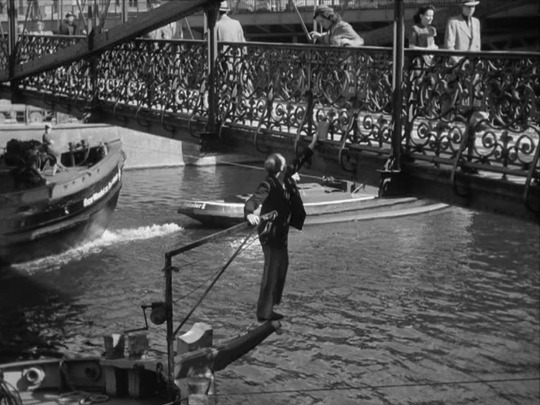

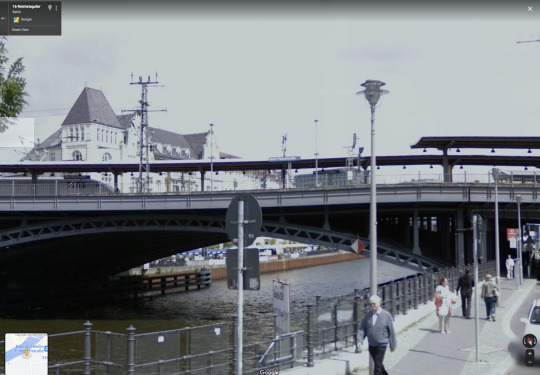
Unter den Brücken / Unter the Bridges
Helmut Käutner. 1946
Bridge 4 (destroyed)
Schlütersteg, Georgenstraße 10117 Berlin, Germany
See in map
#helmut käutner#unter den brücken#under the bridges#schlütersteg#berlin#germany#mitte#hannelore schroth#carl raddatz#gustav knuth#river#bridge#movie#cinema#film#location#google maps#street view#1946
8 notes
·
View notes
Photo

Unter den Brücken | Helmut Käutner | 1946
37 notes
·
View notes
Text
Are we alone? The question is worthy of serious scientific study
by Kevin Knuth
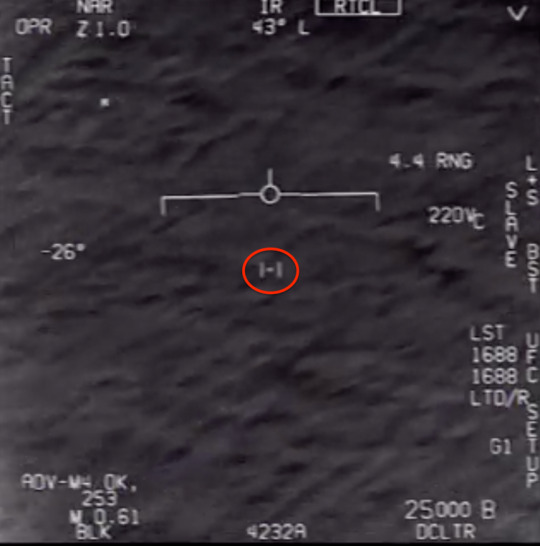
US F/A-18 footage of a UFO (circled in red). Creative Commons Attribution-Share Alike 4.0 International license. Parzival191919, CC BY-NC-SA
Are we alone? Unfortunately, neither of the answers feel satisfactory. To be alone in this vast universe is a lonely prospect. On the other hand, if we are not alone and there is someone or something more powerful out there, that too is terrifying.
As a NASA research scientist and now a professor of physics, I attended the 2002 NASA Contact Conference, which focused on serious speculation about extraterrestrials. During the meeting a concerned participant said loudly in a sinister tone, “You have absolutely no idea what is out there!” The silence was palpable as the truth of this statement sunk in. Humans are fearful of extraterrestrials visiting Earth. Perhaps fortunately, the distances between the stars are prohibitively vast. At least this is what we novices, who are just learning to travel into space, tell ourselves.
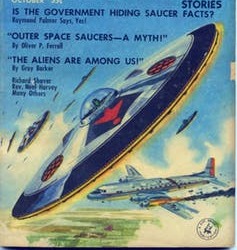
Cover of the October 1957 issue of pulp science fiction magazine Amazing Stories. This was a special edition devoted to ‘flying saucers,’ which became a national obsession after airline pilot Kenneth Arnold sighted a saucer-shaped flying objects in 1947.
I have always been interested in UFOs. Of course, there was the excitement that there could be aliens and other living worlds. But more exciting to me was the possibility that interstellar travel was technologically achievable. In 1988, during my second week of graduate school at Montana State University, several students and I were discussing a recent cattle mutilation that was associated with UFOs. A physics professor joined the conversation and told us that he had colleagues working at Malmstrom Air Force Base in Great Falls, Montana, where they were having problems with UFOs shutting down nuclear missiles. At the time I thought this professor was talking nonsense. But 20 years later, I was stunned to see a recording of a press conference featuring several former US Air Force personnel, with a couple from Malmstrom AFB, describing similar occurrences in the 1960s. Clearly there must be something to this.
With July 2 being World UFO Day, it is a good time for society to address the unsettling and refreshing fact we may not be alone. I believe we need to face the possibility that some of the strange flying objects that outperform the best aircraft in our inventory and defy explanation may indeed be visitors from afar – and there’s plenty of evidence to support UFO sightings.
The Fermi paradox
The nuclear physicist Enrico Fermi was famous for posing thought provoking questions. In 1950, at Los Alamos National Laboratory after discussing UFOs over lunch, Fermi asked, “Where is everybody?” He estimated there were about 300 billion stars in the galaxy, many of them billions of years older than the sun, with a large percentage of them likely to host habitable planets. Even if intelligent life developed on a very small percentage of these planets, then there should be a number of intelligent civilizations in the galaxy. Depending on the assumptions, one should expect anywhere from tens to tens of thousands of civilizations.
With the rocket-based technologies that we have developed for space travel, it would take between 5 and 50 million years for a civilization like ours to colonize our Milky Way galaxy. Since this should have happened several times already in the history of our galaxy, one should wonder where is the evidence of these civilizations? This discrepancy between the expectation that there should be evidence of alien civilizations or visitations and the presumption that no visitations have been observed has been dubbed the Fermi Paradox.

This photograph was taken in Wallonia, Belgium. J.S. Henrardi
Carl Sagan correctly summarized the situation by saying that “extraordinary claims require extraordinary evidence.” The problem is that there has been no single well-documented UFO encounter that would alone qualify as the smoking gun. The situation is exacerbated by the fact that many governments around the world have covered up and classified information about such encounters. But there are enough scraps of evidence that suggest that the problem needs to be open to scientific study.
UFOs, taboo for professional scientists
When it comes to science, the scientific method requires hypotheses to be testable so that inferences can be verified. UFO encounters are neither controllable nor repeatable, which makes their study extremely challenging. But the real problem, in my view, is that the UFO topic is taboo.
While the general public has been fascinated with UFOs for decades, our governments, scientists and media, have essentially declared that of all the UFO sightings are a result of weather phenomenon or human actions. None are actually extraterrestrial spacecraft. And no aliens have visited Earth. Essentially, we are told that the topic is nonsense. UFOs are off-limits to serious scientific study and rational discussion, which unfortunately leaves the topic in the domain of fringe and pseudoscientists, many of whom litter the field with conspiracy theories and wild speculation.
I think UFO skepticism has become something of a religion with an agenda, discounting the possibility of extraterrestrials without scientific evidence, while often providing silly hypotheses describing only one or two aspects of a UFO encounter reinforcing the popular belief that there is a conspiracy. A scientist must consider all of the possible hypotheses that explain all of the data, and since little is known, the extraterrestrial hypothesis cannot yet be ruled out. In the end, the skeptics often do science a disservice by providing a poor example of how science is to be conducted. The fact is that many of these encounters – still a very small percentage of the total – defy conventional explanation.
The media amplifies the skepticism by publishing information about UFOs when it is exciting, but always with a mocking or whimsical tone and reassuring the public that it can’t possibly be true. But there are credible witnesses and encounters.
Why don’t astronomers see UFOs?
I am often asked by friends and colleagues, “Why don’t astronomers see UFOs?” The fact is that they do. In 1977, Peter Sturrock, a professor of space science and astrophysics at Stanford University, mailed 2,611 questionnaires about UFO sightings to members of the American Astronomical Society. He received 1,356 responses from which 62 astronomers – 4.6 percent – reported witnessing or recording inexplicable aerial phenomena. This rate is similar to the approximately 5 percent of UFO sightings that are never explained.
As expected, Sturrock found that astronomers who witnessed UFOs were more likely to be night sky observers. Over 80 percent of Sturrock’s respondents were willing to study the UFO phenomenon if there was a way to do so. More than half of them felt that the topic deserves to be studied versus 20 percent who felt that it should not. The survey also revealed that younger scientists were more likely to support the study of UFOs.
UFOs have been observed through telescopes. I know of one telescope sighting by an experienced amateur astronomer in which he observed an object shaped like a guitar pick moving through the telescope’s field of view. Further sightings are documented in the book “Wonders in the Sky,” in which the authors compile numerous observations of unexplained aerial phenomena made by astronomers and published in scientific journals throughout the 1700s and 1800s.
Evidence from government and military officers
Some of the most convincing observations have come from government officials. In 1997, the Chilean government formed the organization Comité de Estudios de Fenómenos Aéreos Anómalos, or CEFAA, to study UFOs. Last year, CEFAA released footage of a UFO taken with a helicopter-mounted Wescam infrared camera.

Declassified document describing a sighting of a UFO in December 1977, in Bahia, a state in northern Brazil. Arquivo Nacional Collection
The countries of Brazil, Canada, Denmark, Ecuador, France, New Zealand, Russia, Sweden and the United Kingdom have been declassifying their UFO files since 2008. The French Committee for In-Depth Studies, or COMETA, was an unofficial UFO study group comprised of high-ranking scientists and military officials that studied UFOs in the late 1990s. They released the COMETA Report, which summarized their findings. They concluded that 5 percent of the encounters were reliable yet inexplicable: The best hypothesis available was that the observed craft were extraterrestrial. They also accused the United States of covering up evidence of UFOs. Iran has been concerned about spherical UFOs observed near nuclear power facilities that they call “CIA drones” which reportedly are about 30 feet in diameter, can achieve speeds up to Mach 10, and can leave the atmosphere. Such speeds are on par with the fastest experimental aircraft, but unthinkable for a sphere without lift surfaces or an obvious propulsion mechanism.

1948 Top Secret USAF UFO extraterrestrial document. United States Air Force
In December 2017, The New York Times broke a story about the classified Advanced Aviation Threat Identification Program, which was a $22 million program run by the former Pentagon official Luis Elizondo and aimed at studying UFOs. Elizondo resigned from running the program protesting extreme secrecy and the lack of funding and support. Following his resignation Elizondo, along with several others from the defense and intelligence community, were recruited by the To the Stars Academy of Arts & Science, which was recently founded by Tom DeLonge to study UFOs and interstellar travel. In conjunction with the launch of the academy, the Pentagon declassified and released three videos of UFO encounters taken with forward looking infrared cameras mounted on F-18 fighter jets. While there is much excitement about such disclosures, I am reminded of a quote from Retired Army Colonel John Alexander: “Disclosure has happened. … I’ve got stacks of generals, including Soviet generals, who’ve come out and said UFOs are real. My point is, how many times do senior officials need to come forward and say that this is real?”
A topic worthy of serious study
There is a great deal of evidence that a small percentage of these UFO sightings are unidentified structured craft exhibiting flight capabilities beyond any known human technology. While there is no single case for which there exists evidence that would stand up to scientific rigor, there are cases with simultaneous observations by multiple reliable witnesses, along with radar returns and photographic evidence revealing patterns of activity that are compelling.

Declassified information from covert studies is interesting, but not scientifically helpful. This is a topic worthy of open scientific inquiry, until there is a scientific consensus based on evidence rather than prior expectation or belief. If there are indeed extraterrestrial craft visiting Earth, it would greatly benefit us to know about them, their nature and their intent. Moreover, this would present a great opportunity for mankind, promising to expand and advance our knowledge and technology, as well as reshaping our understanding of our place in the universe.
Kevin Knuth is an Associate Professor of Physics at the University at Albany, State University of New York.
This article was originally published on The Conversation.
37 notes
·
View notes
Photo
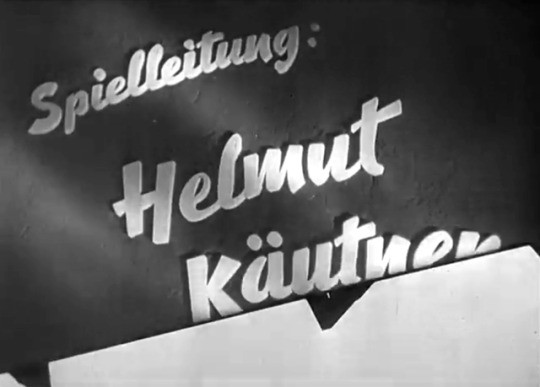
unter den brücken (1944/45)
0 notes
Photo
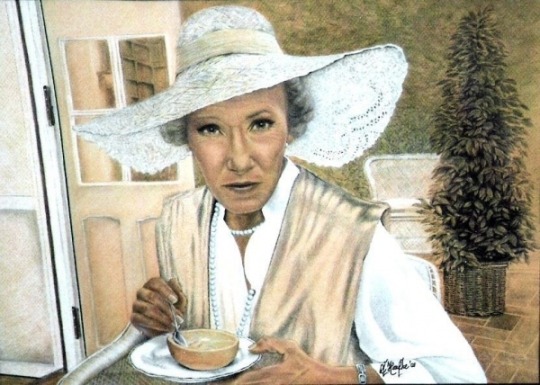

Brigitte Horney (* 29. März 1911 in Dahlem (heute Berlin); † 27. Juli 1988 in Hamburg-Eppendorf) war eine deutsch-amerikanische Schauspielerin (Theater und Film) und Hörspielsprecherin.
In den dreißiger Jahren wohnten im damaligen Potsdamer Star-Viertel Babelsberg Filmberühmtheiten wie Brigitte Horney und Lilian Harvey.
Keine Chance hatte Goebbels bei Brigitte Horney. Sie sei "kalt wie eine Hundeschnauze", soll er sich über sie beklagt haben. "Ich verstehe ihre Popularität nicht." Brigitte Horney schützte schon ihre Herkunft davor, sich bei den Nazis anzudienen. Ihr Vater war Direktor beim Stinnes-Konzern, ihre Mutter die später weltbekannte Psychoanalytikerin Karen Horney. Brigitte Horney war 27, als sie sich in Neubabelsberg niederließ. Vom Juni 1938 bis zum Mai 1939 kaufte sie in drei Etappen ein traumhaftes, insgesamt 9417 Quadratmeter großes Grundstück von dem Textilienhersteller Fritz Gugenheim und dessen Sohn Hans.
Die Horney residierte standesgemäß. Wenn Gäste kamen, wurde von vergoldetem Geschirr gespeist, das ihr ein Scheich bei Dreharbeiten in Nordafrika geschenkt hatte. Ihre schwedische Kollegin Zarah Leander lästerte nach einer Einladung: "Bei der Horney ißt man von vergoldeten Tellern, aber das Essen schmeckt nicht besonders." Horney profitierte zwar vom NS-Regime, doch sie war keine Nationalsozialistin. Endgültig auf Distanz zum Dritten Reich brachte sie das Schicksal ihres Filmpartners und Freundes Joachim Gottschalk.
Zu ihren Mitschülerinnen bei Ilka Grüning gehörten unter anderem auch Inge Meysel und Lilli Palmer. Horney bewunderte Meysel, mit Lilli Palmer war sie zeit ihres Lebens freundschaftlich verbunden.
In ihren Rollen verkörperte Horney meist starke Frauen. Obgleich sie während des Nationalsozialismus als junge Darstellerin etliche Erfolge feiern konnte, versuchte sie ihre Unabhängigkeit zu wahren und setzte sich für bedrohte Kolleginnen und Kollegen ein. So war sie bereit, für den von den Nazis wegen der Ehe mit einer Jüdin mit Schauspielverbot belegten Kollegen Joachim Gottschalk in die Schweiz zu fliegen, um für diesen ein Engagement einzuholen, während andere Kollegen zur Scheidung rieten. Als Horney nach den Verhandlungen mit dem Theater zurückkehrte, erfuhr sie vom Selbstmord der Familie Gottschalk und nahm unter anderen mit ihrem Mann sowie mit den Schauspielkollegen Gustav Knuth, René Deltgen und Werner Hinz und weiteren Freunden an der Beisetzung teil, trotz der Anweisung von Goebbels, sich als Prominenter von dieser fernzuhalten.
Darüber hinaus unterstützte sie die jüdische Vermieterin ihrer norwegischen Freundin Gerd Høst-Heyerdahl in Berlin und pflegte Kontakt zu Carl Zuckmayer im Exil. In ihrer Villa in Neubabelsberg, die sie im Zuge der Arisierung 1939 erworben hatte, beherbergte Horney 1942 Erich Kästner, der dort unter dem Pseudonym Berthold Bürger das Drehbuch für den UFA-Jubiläumsfilm Münchhausen schrieb, in dem Horney 1943 die Zarin Katharina die Große spielte, eine der Hauptrollen.
Nach dem Tode ihrer Mutter 1952 zog Brigitte Horney nach Boston, USA, um deren Lebenswerk und deren Poliklinik weiterzuführen. 1953 wurde Brigitte Horney amerikanische Staatsbürgerin. Sie war in erster Ehe mit dem Kameramann Konstantin Irmen-Tschet und in zweiter Ehe mit dem Kunsthistoriker Hanns Swarzenski verheiratet.
In ihren letzten Lebensjahren wurde sie vor allem im deutschen Fernsehen zum Publikumsliebling, so als Tante Polly in der deutsch-kanadischen Kinder- und Jugendserie Die Abenteuer von Tom Sawyer und Huckleberry Finn, in Jakob und Adele neben Carl-Heinz Schroth oder in der Titelrolle als Teufels Großmutter. Kurz vor Ende der Dreharbeiten zur zweiten Staffel der Serie Das Erbe der Guldenburgs verstarb die 1986 an Krebs erkrankte Schauspielerin an den Folgen dieser Erkrankung. Sie erlag einem Herzschlag. Da Brigitte Horney eine tragende Rolle in der Serie gespielt hatte, musste das Drehbuch zur dritten Staffel komplett umgeschrieben werden. Ihr Grab befindet sich auf dem Friedhof der bayerischen Gemeinde Wielenbach im Ortsteil Wilzhofen.
Ihr schriftlicher Nachlass befindet sich im Archiv der Akademie der Künste in Berlin.
0 notes
Text
Bill Gates once said 'definitely send me a résumé' if you finish this fiendishly difficult book
In the world of Silicon Valley, there are few books held in higher esteem than "The Art of Computer Programming," a multivolume set by Stanford professor emeritus Donald Knuth.
"If you think you're a really good programmer... read (Knuth's) Art of Computer Programming... You should definitely send me a résumé if you can read the whole thing," read a quote from Bill Gates on the cover of the third edition of the first volume.
That quote was taken from a syndicated newspaper column that Gates used to write, reported the MIT Technology Review's Steve Ditlea, where he also praised its legendary difficulty:
It took incredible discipline, and several months, for me to read it. I studied 20 pages, put it away for a week, and came back for another 20 pages. If somebody is so brash that they think they know everything, Knuth will help them understand that the world is deep and complicated.
When the first volume of "The Art of Computer Programming" came out in 1962, it was the first book to take a deep look into the math and science of programming. Knuth has made this his life's work, and has said that it'll be a seven-volume set before it's done, "God willing." The most recent piece of the book was released in December 2015.
"The four hardbound volumes of Donald Knuth's 'The Art of Computer Programming' — all snug in their dark purple case — send a clear message: Step aside, Muggles, because you're in the presence of a Real Programmer. A Serious Practitioner of Computer Science," writes San Francisco entrepreneur Carl Tashian in a Medium essay.
Over that long span, Knuth's work has become the stuff of tech-industry legend — a rite of passage for any programmer who wants to go beyond mere coding and deeper into the underlying complexity that makes it all work.
"If there is a Koran, Bible, or Tao of Computer Science, this is it," wrote an Amazon reviewer in 1997.
It's known for being thorough and deep, sure, but also tremendously challenging and bruising to the ego of many programmers. The cream of the crop, including Gates, have trouble navigating Knuth's example problems and dense mathematical proofs.
And despite its long publishing history, Knuth keeps "The Art of Computer Programming" up to date by enlisting his many fans. If you spot any kind of error in his books, you might get one of his famous "Knuth reward checks," a bounty in the amount of $2.56, or what he calls "one hexadecimal dollar." Those checks are a valuable prize for anyone who wants to prove that they know what they're talking about.
You don't need to read it in order to understand how to write a computer program any more than you have to understand how internal combustion works to drive a car, so don't take this as a homework assignment. But if you want to test your mettle against the best, the up-to-date "The Art of Computer Programming" is on Amazon now.
SEE ALSO: Here are the 5 books Bill Gates thinks everyone should read this summer
Join the conversation about this story »
NOW WATCH: Nathan Myhrvold on Bill Gates' genius for finding the best ideas, admitting when he's wrong
0 notes
Text
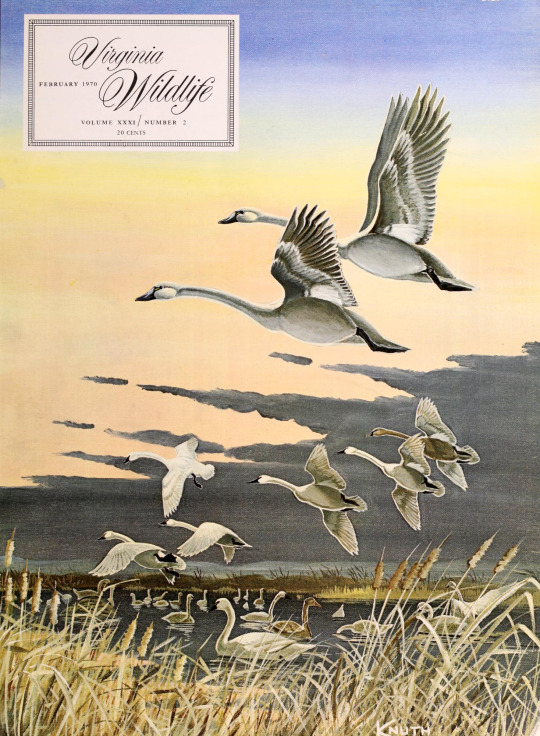
Virginia Wildlife; vol. 31, no. 2. February, 1970. Cover illustration by Carl Knuth.
Internet Archive
193 notes
·
View notes